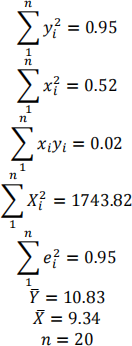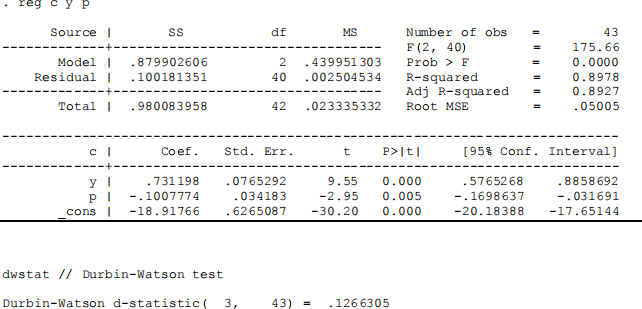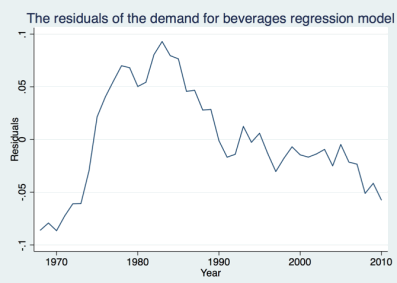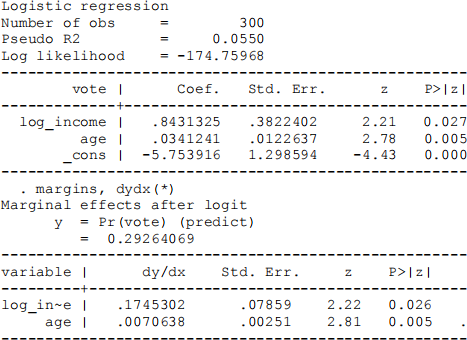MGT6096 QUANTITATIVE METHODS FOR FINANCE AND ACCOUNTING
Hello, dear friend, you can consult us at any time if you have any questions, add WeChat: daixieit
MGT6096
QUANTITATIVE METHODS FOR FINANCE AND ACCOUNTING
Section A
Question 1
1. An analyst is studying the relationship between the house prices (measured in GBP) and the distance from the city hall (measured in miles). They take a random sample of 20 houses sold in the Sheffield area and estimated a relationship of the following form:

where Y is the natural logarithm of house price and X is the natural logarithm of distance from the city hall. The disturbance terms, ui, are assumed to be normally and independently distributed with a mean ofzero and constant variance ![]() 2 . The preliminary
2 . The preliminary
analysis of the sample data produces the following sample information: ![]()

Lower case letters indicate that the variables are measured as deviations from their respective sample means i.e xi = Xi - X .
Use the above sample information to answer all following questions for Santander. Show explicitly all calculations.
(a) Calculate estimates, b1 and b2, for the unknown equation coefficients, B1 and B2 .
[5 marks]
(b) Calculate the estimated standard errors ofthe estimated coefficients.
[5 marks]
(c) Perform a test of the null hypothesis H0: B2 = 0 against the alternative hypothesis
H1: B2 ≠ 0 at the 5% significance level. [5 marks]
(d) State the regression equation and interpret the estimated coefficients for Santander.
[5 marks]
(e) Compute the value of R2 for the estimated regression. Briefly explain what the estimated
value of R2 means.
[5 marks]
(f) Perform a test of the overall fit ofthe model.
[5 marks]
2. Suppose Bill plans to check whether the effect of firm size is the same for both local and international companies, and includes a dummy variable overseas and interaction term (overseas#log(![]()
![]()
![]()
![]()
![]() ) ) into the model specification:
) ) into the model specification:

Where overseas takes the value of 1 if the firm has business overseas, and 0 otherwise. The regression is estimated as follows:

Explain the null hypothesis if Bill tests Ho: ![]() 3 = 0. If Bill wants to test whether the whole R&D expenditures equation is the same for both overseas and local companies, what will be the hull hypothesis? Assume all estimates are significant in equation (2), draw a graph to illustrate the relationship between R&D expenditures (Y) and firm size (X) for both overseas and local companies.
3 = 0. If Bill wants to test whether the whole R&D expenditures equation is the same for both overseas and local companies, what will be the hull hypothesis? Assume all estimates are significant in equation (2), draw a graph to illustrate the relationship between R&D expenditures (Y) and firm size (X) for both overseas and local companies.
[10 marks]
![]()
Section B
Question 2
1 An estate agent wants to examine whether the index of rental prices is related to income and interest rates. She has quarterly data on the index of private housing rental prices (IPHRP), real income per capita, and local deposit interest rates. The IPHRP is possibly a trending variable with seasonality. She specifies the following model:

What problem could be caused if she ignores trend and seasonality? Amend the model above and explain your answer.
[8 marks]
2 The linear regression model below is estimated to analyse the demand for petrol in the UK (ct). Disposable income (yt) and the price index of petrol (pt) are included as explanatory variables. The data contain 43 observations from 1968 to 2010.

(a) The residuals of the regression are plotted in the figure below. The pattern of residuals
implies that the assumptions for simple linear regression might not be satisfied. Discuss the potential problem.
[8 marks]

(b) Suppose the errors in the above case follow the AR(1) model. For instance, we assume
that

Perform Durbin-Watson test (at both 5% and 1% significant levels) and interpret the
results.
[6 marks]
(c) You want to estimate the following model by using the Cochrane-Orcutt procedure:

where ct is the demand for petrol in the UK, yt is disposable income, and pt is the
price index for petrol. Assume that the errors follow the AR(1) process. Outline all the steps of the Cochrane-Orcutt (CO) procedure to estimate the model specification above.
[8 marks]
Question 3
1. Explain the difference between dummy variable regression models and qualitative response regression models.
[5 marks]
2. A postgraduate student is interested in explaining what factor will affect decisions to vote for or against Brexit. The response variable Yi is binary: one means leave vote, while zero means remain. The explanatory variables of interests are individual’s log value of annual income (X1i), and age (X2i). Suppose the following regression model is estimated:

(a) He firstly estimates the model using OLS, and obtains the estimates ![]() 1 = 0.3 and
1 = 0.3 and ![]() 2 =
2 =
0.5. Explain how to interpret the results. Clarify possible problems of using OLS in the analysis.
[8 marks]
(b) The Stata output below shows the estimates of the maximum likelihood estimation
from the logit model and average partial effects (marginal effects at mean point). Interpret the results (significant level 5%). Explain why we need to calculate marginal effects.
[10 marks]

(c) Critically discuss the key differences between probit and tobit models.
[7 marks]
Question 4
1. A researcher uses panel data of UK high-tech companies to investigate the relationship between firm investment in research and development (R&D) and leverage. The dataset contains 150 firms from 2000 to 2010. She specifies the following model:

Where ![]()
![]() ,
,![]() is Investment in R&D/ total assets for firm i at year t;
is Investment in R&D/ total assets for firm i at year t; ![]()
![]()
![]()
![]()
![]()
![]()
![]() ,
,![]() is Debt/total assets for firm i at year t; log (
is Debt/total assets for firm i at year t; log (![]()
![]()
![]()
![]()
![]()
![]() ,
,![]() ) is log value of total assets for firm i at year t;
) is log value of total assets for firm i at year t;
![]()
![]()
![]()
![]()
![]()
![]()
![]() ,
,![]() is a dummy variable, takes one when the firm’s headquarters are located in London, otherwise zero.
is a dummy variable, takes one when the firm’s headquarters are located in London, otherwise zero.
(a) What are the advantages of constructing a fixed effect, rather than using OLS?
[5 marks]
(b) The Stata output below displays the estimates of panel data regression with fixed effects.
Interpret the coefficients and goodness-of-fit. Explain the reasons why the dummy variable ![]()
![]()
![]()
![]()
![]()
![]()
![]() ,
,![]() is omitted from the estimation.
is omitted from the estimation.
[10 marks]

(c) The Stata output below displays the estimates of panel data regression with random effects. Interpret the coefficient of ![]()
![]()
![]()
![]()
![]()
![]()
![]() ,
,![]() (5% significant level) and the meaning of rho statistic. Explain in detail a procedure which could be used to decide appropriateness of fixed vs random effects models.
(5% significant level) and the meaning of rho statistic. Explain in detail a procedure which could be used to decide appropriateness of fixed vs random effects models.
[6 marks]

(d) Critically discuss assumptions, advantages and disadvantages of the fixed and random effects specifications.
[9 marks]
2022-01-29